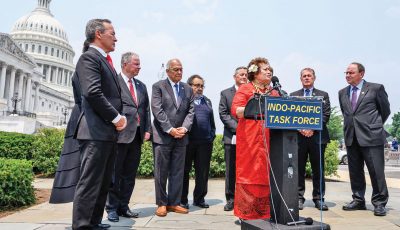January arrivals dip
According to the Marianas Visitors Authority, arrivals to the CNMI dipped to 55,429 in January 2018, compared to 63,346 visitors received in January 2017
The decline is due to a variety of factors outside and within the Marianas, according to MVA managing director Christopher A. Concepcion.
“Lunar New Year fell in February this year compared to January in 2017, moving that large block of holiday travel out of January to February. Also, we continue to feel the effects of Eastar Jet ceasing flights from Korea in October 2016,” said Concepcion. “We don’t necessarily view this slight decrease as a bad thing. Arrivals have grown tremendously the past two years, and now they’ve begun to stabilize, which gives everyone the opportunity to enhance their product, reinvest in our destination, and have our infrastructure catch up with demand. Internally, the MVA is working with a reduced budget this fiscal year, resulting in fewer opportunities to market the islands and incentivize travel. However, we continue to work strategically with the funding we have been allotted.”
Arrivals from Korea fell 7 percent to 28,750 visitors, although the country retained its position as the top performing source market.
The main reason of the decrease is the suspension of Incheon-Saipan service by Eastar Jet. Asiana Airlines, Jeju Air, Jin Air, and T’way Air provide Incheon-Saipan flight services. T’way Air increased to daily services beginning on Dec. 7, 2017, while Jeju Air added daily Busan-Saipan flight services beginning on Dec. 15, 2017, adding a combined 49,140 seats to the Marianas annually.
Arrivals from China dropped 23 percent compared to January 2017 to 19,572 visitors. In addition to Lunar New Year falling in February this year compared to January last year, arrivals from China have been dampened by the cessation of Dynamic Airway charter flight service after the summer 2017 holiday. However, visitor arrivals from China to the Marianas are expected to increase in the coming months due to the lower rate of the U.S. dollar, as well as recent volcanic eruption in Bali and domestic conflict in Maldives, both competing beach destinations.
Arrivals from Japan were 8 percent lower than January 2017 at 3,716 visitors, in part due to Delta Air Lines’ cancellation of six flights during the month for yield management, a strategy to maximize profits based on anticipated consumer demand. Delta has also announced it will discontinue its Tokyo Narita-Saipan daily flight in early May 2018. The MVA is current in confidential negotiations with several airlines to pick up the route or expand to other cities in the source market and will be meeting with key travel trade partners and travel media next week in Narita, Osaka, and Nagoya.
Economic highlights
South Korea’s ranking in the global export market improved from last year and is now ranked sixth, according to Hyundai Research Institute.
South Korean’s investment in overseas stocks for the full year could hit the highest mark since 2007 when comparable investment was worth $52.6 billion. The average US dollar/won exchange rate in January was 1,064.29 won, a slight decrease from the previous rate of 1,107.12 won in December 2017.
In China, short-distance outbound travel is still the main choice of travelers. A family holiday in warm, comfortable, relaxing islands is more popular, and the Marianas has moved into the top 10 outbound island destinations. The yuan continues a slow steady fluctuation cycle against the U.S. dollar, but core travel segments remain unaffected.
Japan’s economy posted its longest continuous expansion since the 1980s boom as fourth quarter growth was boosted by consumer spending and moved Prime Minister Shinzo Abe’s revival plan another step closer to vanquishing decades of stagnation. Monthly average rate for U.S. dollar to Japanese yen exchange in January 2018 was 111.07 compared to 112.93 in December 2017. (MVA)



























